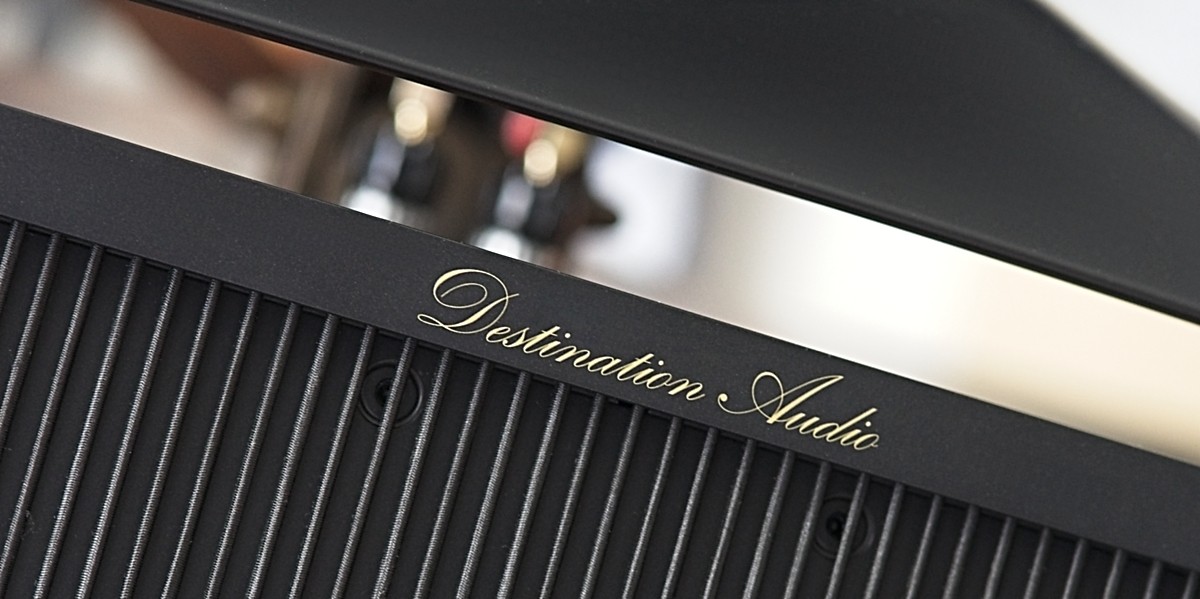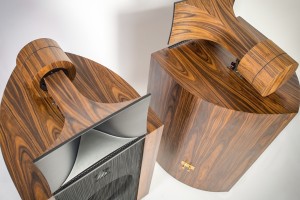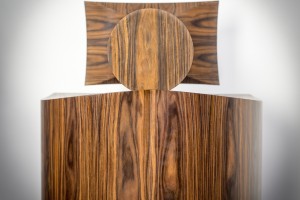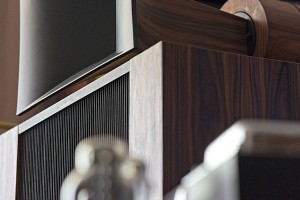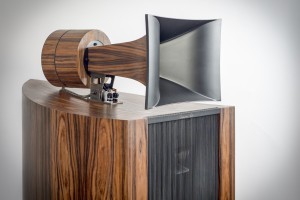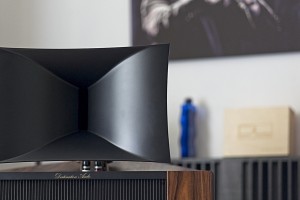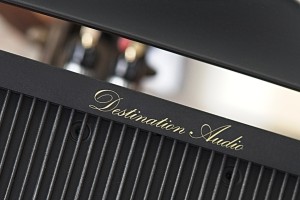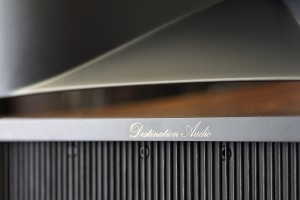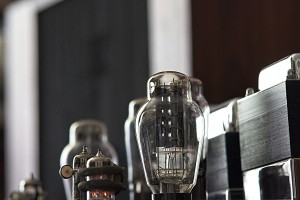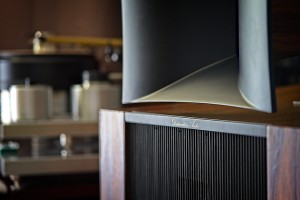While today not so popular as bass-reflex designs, horn speakers are still sought after primarily by those who love low-power tube amplifiers. It is not easy though, to come by ones that offer a proper class to be a good match for top tube electronics. Destination Audio has been famous for its huge 105 dB sensitive Vesta horns, but later they decided to make a smaller speaker yet still high-sensitivity model. That’s the origin story of Destination Audio NiKA.
Introduction
There are very few „first times” that I vividly remember from my music lover’s part of life. As far as audio components go, I can still remember the very first time I listened to a 300B SET and the first time I was wowed by horn speakers. I have no clue about my first solid-state amp, CD Player, DAC, and so on, but my first encounters with horns, 300B SET, and a turntable (well, sort of turntable, but it played… sort of singles or musical postcards, as they were called – I told this story in one of my other reviews already) – these three events have been imprinted in my brain for some 30, and closer to 50 (as far as the turntable goes) years and probably will stay with me forever. It’s just one of those cases of love at first sight that never really passes.
As a result, I owned some SET amplifiers, and still have one. I also had a few pairs of horn speakers but parted my ways with the last, and the best of them (Bastanis Matterhorn) some years ago, only because they were not the best tool for a reviewer (and I still regret it, to be honest). Yet, somewhere deep inside I know, that one day I will end up with a SET driving horns setup with a turntable as a front end. For now though, rare chances to review some SET amplifiers and horn speakers must be enough. When they come up I immediately „jump” at the chance of spending some time with them, preferably in my place, always hoping for the incredible and unique experience the good ones have to offer.
Let me emphasize „good ones”, because as with any type of audio component (!), you can find also some poorly designed ones. I know many people who don’t even want to hear about horns based on their experiences at various shows. I can understand them as I also had a few quite unpleasant experiences at various shows. On the other hand, I could say that about any type of audio component, not just horns. Yet, when given a chance, in the right system and room, the same people usually admit that there is something special about such speakers.
Destination Audio seems to be one of those brands though, that know how to wow people at the shows, as their rooms are usually full of music lovers who usually (based on my observations) stay there longer than in most rooms. Whether they like this type of presentation and want this kind of experience for themselves, is a separate issue, as we all have our preferences – that’s what ensures the availability of the wide variety of audio products, as manufacturers do their best to satisfy any demand. The point is, that when properly set up and presented, horn speakers „speak” to many of those people who disregard this type of design even as an option for their own system.
As I already mentioned in the Destination Audio 417A phono preamplifier’s review, the latter was not the only creation by Wlodek ‘Sam’ Wisniewski I was interested in. His tube amplifiers and horn speakers seemed as interesting. The problem with speakers has always been their weight. Even the smallest NiKA weighed around 115 kg (net) a piece, so I knew that getting them to my place would be a real challenge. Yet, Wlodek decided he would make it happen, and one beautiful day they arrived. I already saw the speakers previously at the Audio Video Show in Warsaw and at Wlodek’s place. Yet, only when they got to my room I fully understood how huge they were. I really felt for the guys who carried them four flights of stairs up to my apartment, but I was happy as I knew an exciting adventure was about to begin.
Sam personally set up the speakers in my room – after all, he was the one with previous experience with NiKA. He left me some room for „tunning”, as the horns are adjustable in the vertical plane, and I could play with the toe-in of the whole speaker as well. After the initial setup and small adjustments to make sure the distance of both speakers from the listening spot was the same, we just set down and enjoyed the music for an hour or two together. What’s more, we connected NiKA to the setup where they directly replaced another unusual (by that I mean coming from another niche of the speakers’ market), isodynamic (planar-magnetic) pair of speakers (Fonica International FLAG L). That meant that they were driven by my Class A solid-state integrated GrandiNote Shinai, not a tube amplifier. And yet, after the trip from Sam’s place to mine, driven by a solid-state amp, NiKA sounded really good from the start. It seemed that Wlodek enjoyed listening to the setup (almost) as much as I did.
Design and features
To make NiKA smaller, and friendlier to those with smaller rooms and muscles while trying to keep a high sensitivity necessary for low-power tube amplifiers, and top sound quality, the designer had to go for some compromises. While the big VISTA was a 3-way fully horn-loaded speaker, NiKA, still a 3-way design, features a 16-inch bass driver in a vented cabinet. The other two drivers though benefit from horns. The sensitivity is a bit lower – 99 vs 105 dB – but it is still high enough even for Destination Audio’s own Type 45 Amplifiers with an output of 1,8W (!). The size and weight, while still significant, are way more friendly though. What hasn’t changed is the meticulous, time-consuming craftsmanship, use of rare, top quality, partially vintage components (including drivers) and bentwood, and the fact they are made to order.
With their 64 x 125 cm x 64 cm (W x H x D) and a weight (of a single speaker) of 115 kg, they are huge speakers. The manufacturer recommends them to rooms of a minimum of 20 sqm. Mine is 24 sqm (3 m high) and soundwise they fit right in, but their presence was a bit overwhelming at first. An important clue for potential owners is that these speakers can, and even „like” be placed close to the wall behind them. In my room, we had to push them a bit forward, and it also worked well, but those who have space limitations and need speakers placed very close to the wall don’t have to worry about this setup aspect.
As already mentioned, NiKA uses three drivers. The bass range is reproduced by a custom-made ALNiCO 16-inch woofer that operates in a front-vented cabinet. Another ALNiCO horn compression driver is responsible for the midrange, and also the tweeter is a compression horn-loaded driver. The crossover features top-quality components including Jupiter capacitors, copper ribbon coils, and auto-formers, and the speakers’ posts were sourced from another renowned manufacturer, WBT. The speakers are available in two versions, with a nominal impedance of either 8 or 16 Ohm. Their frequency response ranging from 25 Hz to 20 kHz promises a full-range sound.
Sound
After the designer left my place I kept listening without changing anything in the setup. I spent the whole evening doing what I rarely do, searching for particular tracks in Roon, and playing them one by one just to find out, how would they sound with these speakers. Since it was already quite late, I had to keep the volume level down, but since the Destination Audio horns were designed as perfect partners for low-power tube amplifiers, with their high sensitivity and pretty flat impedance curve they delivered rich, full, complete sound even when listened to at very low levels. It’s one of the reasons I love high-sensitivity speakers – you don’t have to push the volume up to get a highly satisfying result.
Some features of this performance stood out from the start. One of them was incredible dynamics, which also Wlodek noticed almost from the start and commented that the amplifier, Shinai, had to be incredibly dynamic to deliver such a presentation with NiKA. The other thing that also impressed me from the beginning, was how spatial the presentation was. For me, it was particularly impressive, as the aforementioned FLAG L isodynamic (planar-magnetic) speakers I’d listened to before NiKA delivered an absolute peak performance in this regard. In comparison almost any speaker would sound „flat”, but not the horns by Destination Audio. It’s true, that my experience with horn speakers suggested an amazingly spatial presentation, but the „beasts” sitting in front of me did an exceptional job in this regard regardless of what I compared them with.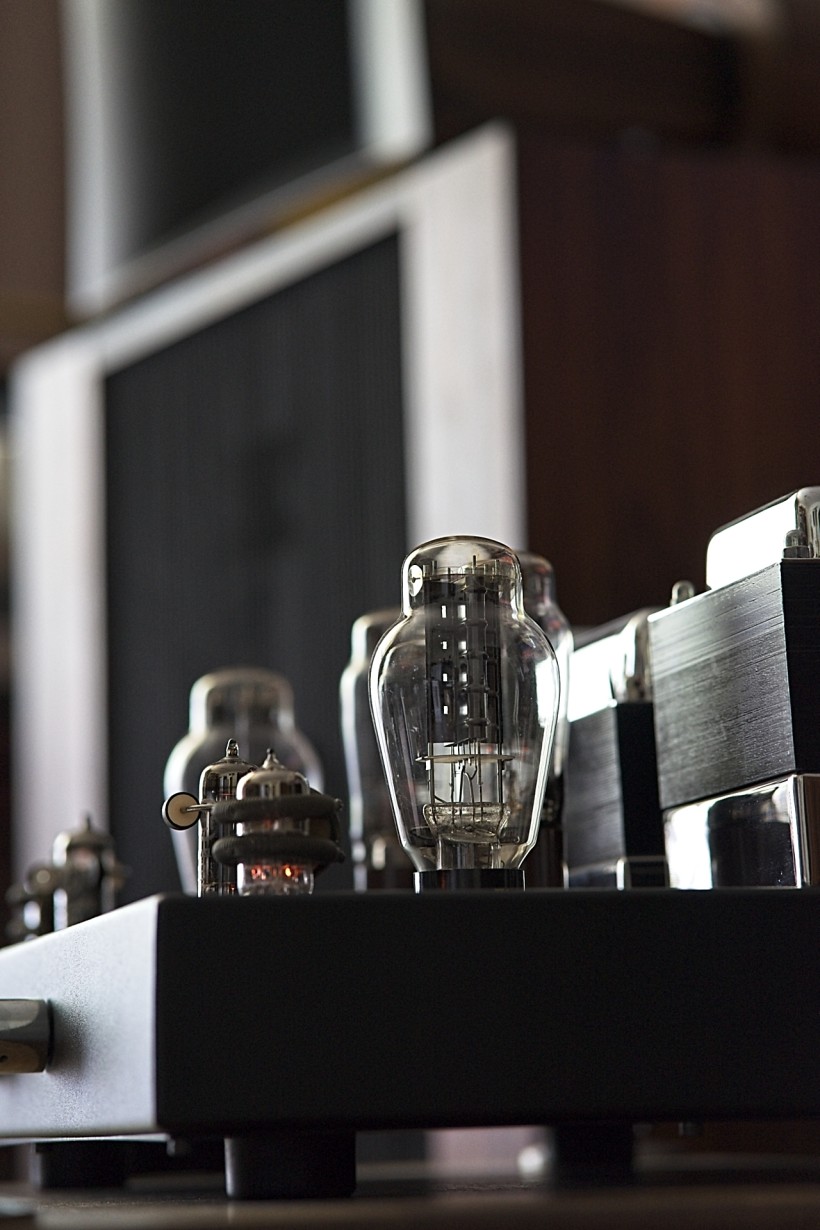
I know that many people with bad horn experiences claim that horns are „shouty”, and bright sounding, that they often enlarge images presenting guitars of the size of (almost) double bass, violins of the size of a cello, and so on. That’s not NiKA. While the top end was open, vibrant, and quite energetic with them, the sound as a whole was almost creamy, definitely not bright, or shouty, some might even say dark. Why dark? For one, the tonal balance of these speakers is set a bit lower than in many, if not most, other speakers on the market (regardless of design). That is because the sound is built around the midrange and the tweeter and woofer while neatly sewn together with the midrange play a supportive not dominant role. Hence one of the highly appreciated qualities of these speakers is coherence. It is not, it simply can’t be and never is with multi-way designs, as perfect as with single-driver competitors, but it comes really, really close.
I love speakers with large woofers. There is something special about a large membrane pushing lots of air hence creating high sound pressure which is why I always look forward to experiencing performances of designs that use such drivers. The NiKA’s 16’’ woofers did not fail my expectations. They did their job in a very convincing and efficient way, delivering a powerful, gutty, fast enough, yet not dominating bass foundation for the midrange. While I am not a big fan of bass-reflex designs this one turned out to be one of the good ones, where I couldn’t really hear this boomy extension of direct sounds that vented speakers often suffer from. I could feel the power of the bass also in my bones in many recordings, but even the lowest, deepest, „heaviest” notes were delivered in a clean, focused way and never failed to keep up with the upper part of the range. And that’s the way I like it…
The tweeter sounded a tad sweet, smooth, never harsh, and yet, as already mentioned, open, vibrant, crisp, and carried enough energy to properly convey, say, a drummer’s stick hardly hitting a cymbal, and the latter responding in kind. Also, while keeping it sort of delicate, and non-aggressive it was fast enough to convey every recording I played in an accurate, convincing way. The key to success though, seemed to be the very skillfully put together, very „transparent”, so to speak, already praised crossover, because the coherence of the whole range was exceptional which is not an easy feat in a 3-way design.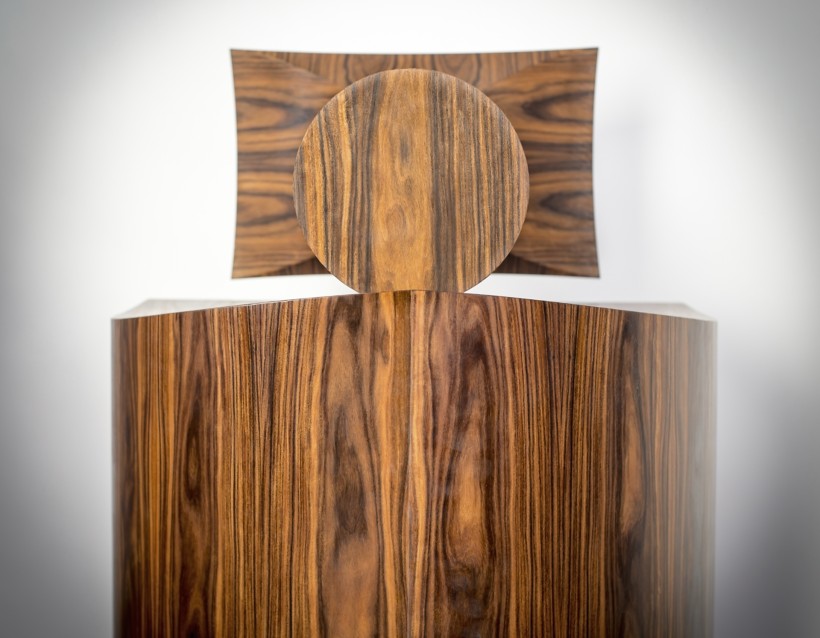
Despite such a great first listening session, the next day I brought out the „big gun”, if I may say so, namely my modified Art Audio Symphony II 300B SET amplifier featuring some NOS tubes and Western Electric triodes in the output stage. It’s not that it is a „better” amplifier than Shinai or the best 300B SET I know, but rather that it is the kind NiKA were made for, hence it was supposed to bring out the best of them. I haven’t used Symphony for quite a long time so it needed an hour or two to fully „wake up”, and deliver its best performance. Once it did, it quickly became clear that it was the optimal match, one that pushed the limits of the whole setup’s performance. Again, Shinai did an exceptionally good job (for a solid-state, a tube-lover would say), but in audio, it is all about the best possible composition of all the components, and the Art Audio Symphony II 300B SET was an even better match for Destination Audio speakers, plain and simple.
So what actually changed or what else did the amplifier manage to bring out of the Destination Audio NiKA? The sound was amazingly spatial already with Shinai, and it didn’t or couldn’t change much with Symphony II, but the imaging further improved, and the large, precisely set on the stage phantom images got even more palpable with their substantial bodies. The difference was quite significant, comparable to switching from a regular image to a 3D one. Even more so, because my Western Electric 300Bs filled the presentation with air surrounding each instrument, allowing them to fully breathe, developing this kind of aura that made each of them more present, more „here and now”.
The SET driving NiKA allowed them also to even better render an acoustic environment surrounding musicians. In some cases with this element particularly well recorded, such as, on the one hand, the huge open space of Noirlac Abbey on Michel Godard’s „Soyeusement Live In Noirlac”, or on the other much smaller from clubs on Arne Domnerus’ „Jazz At The Pawnshop”, Musica Nuda’s „Live à FIP” or Patricia Barber’s „Companion”, NiKA did an exceptional job rendering larger or smaller spatial environment that felt particularly realistic expanding way beyond the walls of my room.
With the performers more „present” in my room the whole performance became not only more realistic, but also more… intimate, and not just in live recordings but also the studio ones. I could (almost) see Jan Garbarek and Manu Kutche just a few meters away from me, and follow their performances closely feeling the energy of every sound. The dynamics and highly energetic way of delivering music, which seemed sort of a specialty of Destination Audio NiKA, additionally increased the feeling of participating in the event, instead of just listening to the recording. The excellent resolution filled the presentation with an abundance of details and subtleties, yet it was not a detailed sound, as all this information was extracted from recordings to form a lush, complete whole, and not to wow listeners with how detailed the speakers were.
Listening to Wynton Kelly Trio and Wes Montgomery’s „Smokin’ At The Half Note” I quickly realized how well the tested speakers differentiated played material. Although it is also a live recording, same as Garbarek’s, it was recorded in a different (more distant) way, and the acoustics of the venue were completely different – it didn’t take any „audiophile experience” to notice that. The sound wasn’t so lively, so open as on the previous album, but rather „dimmed” if you know what I mean. And yet, it did not lack dynamics or energy, and the acoustics of the venue, while less pronounced, were still there. On the other hand, though, maybe because of this „dimmed” sound, the flow of music seemed even better, smoother, and more natural.
And that’s yet another of NiKA’s numerous qualities. While they never sound „showy” or „flashy”, they never try to wow listeners with super-powerful-bass, or treble, they still differentiate recordings very well, and thus they are never boring. There are some speakers (and other components) that try to make all recordings sound good by averaging them to an ear-friendly version. It is fine if you’re listening to the music for pure pleasure and don’t want any „excitement” derived from recording or recording/mixing engineers’ ideas, but it makes most recordings sound the same or at least (too) similar. Destination Audio, while listening to them offered a remarkably pleasant experience, it was also energizing, exciting, and interesting, and it constantly, even late at night, encouraged me to reach for yet another, and yet another, and yet another album.
Another breakthrough, so to speak, came when I finally found time to set up my excellent J.Sikora turntable. Unfortunately, the Destination Audio components visited me one at a time, so the remarkable WE 417A phono stage wasn’t here anymore when NiKA came, but I had another big (tube) „gun” handy, namely Kondo GE-10i to replace my excellent, but not quite of the same performance level as Destination Audio or Kondo competitors, solid-state GrandiNote Celio MK IV. I cued in the first album, Jacques Loussier’s „Pulsion” and… got blown away once more with the level of refinement of the presentation this phenomenal phono preamplifier introduced, and with the even more natural feel of the music coming from NiKA. Even if the Kondo device offered a different sonic character than Destination Audio’s counterpart, it was clear that a top tube phono stage was, at least for me, the best possible source among those available to me, for the tested horns.
What Włodek „Sam” Wisniewski offers with his lineup is sort of a trip to the past – horn speakers, tube amplifiers, and tube phono stage are hardly „modern” components. Yet, once you decide on horns there is really no other way, they will always perform best when accompanied by tube electronics. And even though my LampizatOr Pacific 2 DAC is a tube device, and an outstanding performer when I switched to vinyl (via tube preamplifier) it all just „clicked”. The performance was fantastic before, but it just got better, more… organic, if you know what I mean. And it wasn’t really about the class of the analog rig, although it was phenomenal, but more about the sound of vinyl delivered in the best possible way. Yes, I know that not all music lovers prefer the black record, and it is fine – I did try to convey how great NiKA sounded with my Pacific 2. Those who, like me, still prefer records, should know though, that they will allow you to hear Destination Audio’s horns at their best. If possible, use WE 417A, but if not any top-quality tube phono stage should do.
The album in question („Pulsion”) is a good, very dynamic recording of a piano and drums. The NiKA’s 16’’ woofers did a marvelous job delivering very fast, tight, yet powerful punches of a kickdrum and the immense power of the piano. Not for a second though, the powerful lower part of the range obscured neither deep, colorful, vivid midrange nor open, sonorous, highly energetic cymbals. The latter, while so agile, so intense, so „fresh”, never got bright or harsh. What was so special about this album played via NiKA using a tube phono stage and SET amplifier was the timbre of the piano. It was just… right, deep, tuneful, and open, and that’s what combined with these powerful, yet tight, precise drums, made this presentation so captivating and invigorating.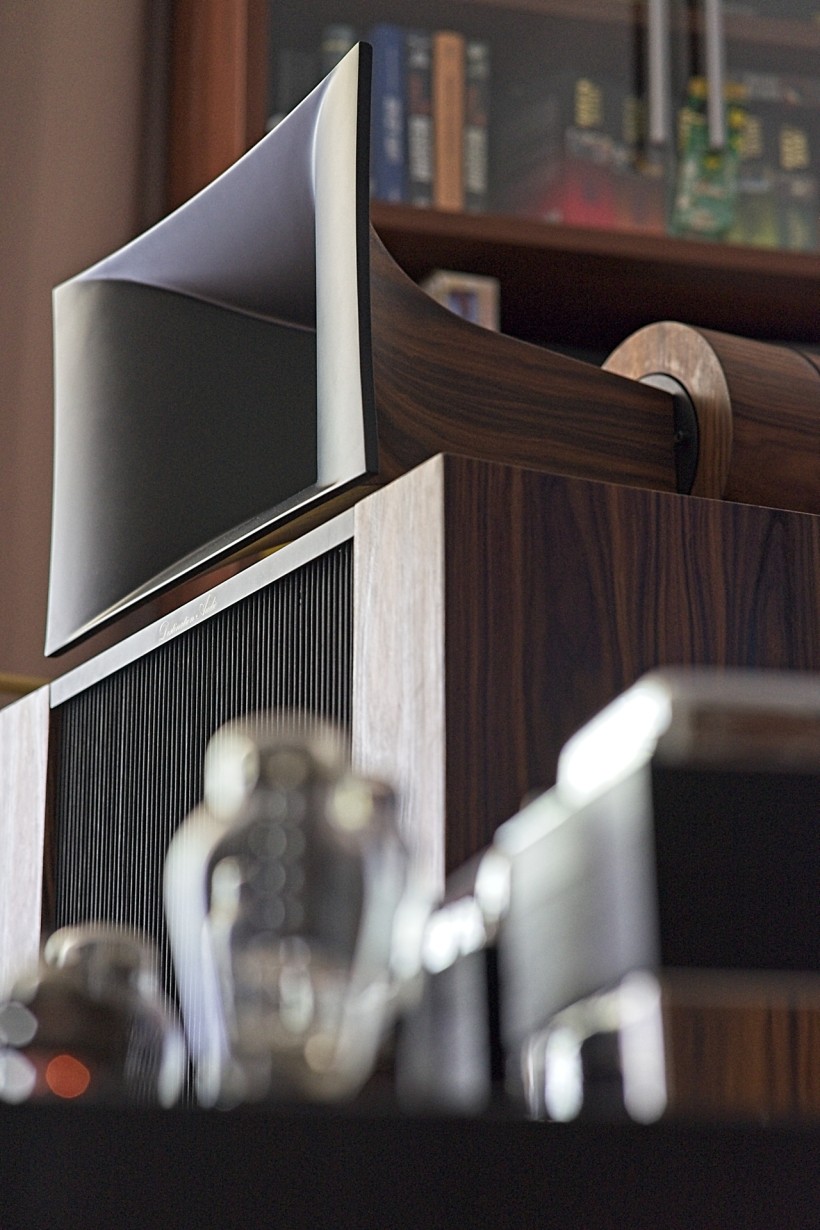
I often play this album when I am a bit down or low on energy and need a musical „pick-me-up”, but to be honest, I don’t think I’d ever felt so „picked up” as I did after listening to it with NiKA. Stereotypes could tell you, that a tube phono preamplifier and a 300B SET have to sound sweet and warm, maybe even fuzzy but this setup delivered amazingly focused, fast, dynamic, highly energetic, and brimming with information performance like only very few other I’d ever heard before in my room. Yes, it was dense due to excellent resolution, yet there was nothing fuzzy about it, yes, it was warm, but only as far as the natural warmth of musical instruments goes. The bottom line is that I sat there listening to the same album for 30-40th time (I mean in total), and on the one hand, I still wanted, and needed to hear what came next, and on the other, it just felt right like I’d always wanted it to sound exactly like it did with this setup.
The next one was the latest addition to my collection, a limited 45 r.p.m. addition of The Mastelottos’ „A Romantic Guide To King Crimson”. The title sort of says it all – it is King Crimson’s music, all right, but rearranged as you’ve never heard it before by Deborah and Pat Mastelotto. NiKA’s adapted immediately to the change of pace and while just moments ago they had played Loussier with power, incredible dynamics, and panache, now they presented a much more romantic, sweeter, and smoother side with this album. I guess for most band’s fans it would take some time to accept the very different versions of their favorite song, but once they do they should find this album very interesting. The leading female vocal was truly captivating, deep, highly expressive, yet gentle, velvety, and very articulate. NiKA presented Deborah close to me, she was palpable, even present, and the whole presentation seemed very intimate. The drums were not as tight and fast as on the previous album which only proved that this tube/horn setup differentiated recordings perfectly.
The next one on my list was Ray Brown and his Trio on „Soular Energy”. Boy, oh boy! I love this album so NiKA didn’t have to, but they still did make me fall in love with it again. Maestro’s double bass was big and heavy (but no bigger or heavier than it should have been, it’s not this type of horn that enlarges every instrument), it sounded powerful, deep, and naturally (!) soft with proper proportions between strings and wood. Gene Harris’ piano, on the other hand, sounded very vivid, agile, and sort of light, meaning not as deep as one may expect it from the instrument, but also in this case it was an accurate representation of the recording. It all came together into a coherent whole that kept me as excited as the audience witnessing the performance and nicely caught on tape obviously was.
Listening to Ron Carter’s „All Blues” maybe for the first time the saxophone grabbed my attention that easily. I looked directly at it as the imaging was so precise and so convincing. It was built using the density of the sound, its depth, the air surrounding the instrument, and the palpability stemming from all that. Yet, it was the air around the instrument, moving through it, and bringing the sound to me that played an unusually large role in the presentation with NiKA. It was responsible for making the body of the instrument more three-dimensional, more realistic than ever before, it let it breathe which combined with the abundance of tiny little details that built up the whole image of the performance turned it into an even more immersive, more „here and now” experience.
Summary
I love horns! I feel as if I have to repeat that because it might have influenced a bit my perception of Destination Audio NiKA even if I tried to be as objective, as it is ever possible with any audio component. Let’s be honest though, it is not very likely that a fan of vented, or closed-cabinet designs will switch to horns after reading this one, or any other review. It wouldn’t be reasonable or recommended. It is a specific type of speaker one has to experience in a good setup and only then decide whether this is what floats their boat or not. If you decide to give them a try Destination Audio NiKA are one of the best possible choices I know.
Many low-power SET amplifier aficionados look for speakers that could be a good match for their amps both in terms of proper high sensitivity and flat impedance curve and top-level performance. Destination Audio NiKA may be your answer. They will be a fantastic match for even the best among SETs, they should perform well even in rooms as small as 20 sqm, and they will deliver a stunning, refined, highly resolving, yet smooth, natural, incredibly musical, but also highly dynamic, amazingly spatial, very „here and now” performance. They will keep you excited, and engaged, as listening to the music will become an immersive, never boring experience. These are some of the best speakers that ever visited my listening room. They, the same as WE 417 A phono stage, fully deserve our VICTOR award, despite the fact, that they are not even the top Destination Audio model. 
Most photographs used in the review by Przemysław Sontowski
Price (when reviewed):
- Destination Audio NiKA: 50.000 USD
Manufacturer: DESTINATION AUDIO
Technical specifications (according to the manufacturer):
- Frequency response: 25 – 20.000 Hz
- Power handling: 20 W
- Sensitivity (1 Watt / 1 m): 99 dB
- Nominal Impedance: 8 or 16 Ohm
- Recommended minimum room size: 20 m2 / 215 ft2
- Dimensions (W x H x D): 64 cm / 25 in x 125 cm / 50 in x 64 cm / 25 in
- Weight (one speaker): 115 kg / 254 lbs
Associated equipment:
- Digital source: a custom passive server with WIN10, Roon, Fidelizer Pro 7.10, JCAT NET XE, and JCAT USB XE cards with FERRUM HYPSOS Signature power supply, KECES P8 (mono) linear power supply for the server, JCAT USB Isolator
- D/A Converter: LampizatOr Pacific 2 +Ideon Audio 3R Master Time (USB signal regenerator)
- Analog front end: J.Sikora Standard MAX turntable, J.Sikora KV12, and J.Sikora KV12 MAX tonearms, AirTight PC-3, phono stages: Grandinote Celio MK IV, ESE Lab Nibiru V 5.
- Power amplifiers: GrandiNote Shinai, Circle Labs M200, Art Audio Symphony II (modified)
- Preamplifier: Circle Labs P300
- Loudspeakers: GrandiNote MACH4, Ubiq Audio Model ONE Duelund Edition.
- Interconnects: Bastanis Imperial x2, Soyaton Benchmark, Hijiri Million, Hijiri HCI-20, KBL Sound Himalaya 2 XLR, David Laboga Expression Emerald USB, David Laboga Digital Sound Wave Sapphire Ethernet
- Speaker cables: Soyaton Benchmark
- Power cables: LessLoss DFPC Signature, Gigawatt LC-3
- Power: Gigawatt PF-2 MK2 and Gigawatt PC-3 SE Evo+; a custom power line with Gigawatt LC-Y in-wall cable; Gigawatt G-044 Schuko and Furutech FT-SWS-D (R)
- Network: Silent Angel Bonn N8 + Silent Angel Forester F1 + optical LAN isolator
- Racks: Base VI, Rogoz Audio 3RP3/BBS
- Anti-vibration accessories: ROGOZ-AUDIO SMO40 and CPPB16 platforms and ROGOZ AUDIO BW40MKII feet, Franc Accessories Ceramic Disc Slim Feet and Wood Block Platform, Graphite Audio CIS-35 and IC-35


